- Home
- international
- news
- 11 astonishing photos that show how Chongqing became the biggest megacity in China in 25 years
11 astonishing photos that show how Chongqing became the biggest megacity in China in 25 years
Marielle Descalsota

- Chongqing is China's biggest city in terms of total population and land area, but it was only developed in 1997.
- The biggest misconception about Chongqing is that it is the biggest city in the world, associate professor Kyle Jaros told Insider.
Chongqing is the biggest city in China. With a population of over 30 million people, the city covers roughly the same land area as South Carolina.
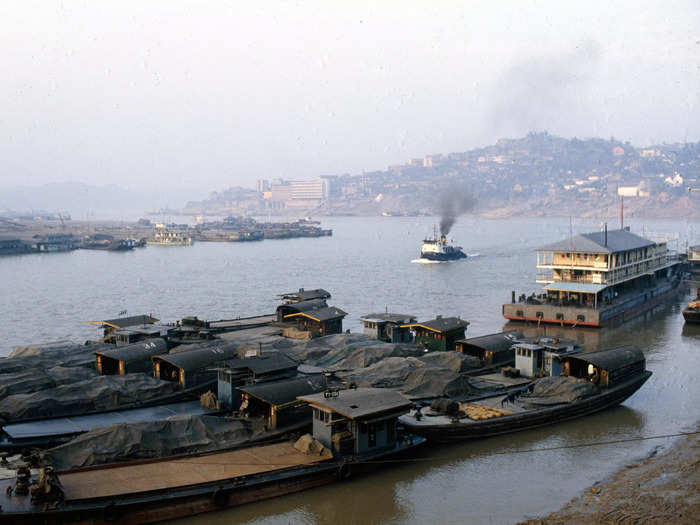
For most of its history, Chongqing was part of Sichuan province. Despite close cultural ties, tension built between the two places over the years.
"Chongqing always had a complicated relationship with Sichuan because it had a different provincial capital — Chengdu," Kyle Jaros, an expert in China's urban and regional development and an associate professor at the University of Notre Dame, told Insider on a video call.
"There was a sense that Sichuan province had favoritism towards Chengdu, and that Chongqing, while important, didn't get the support it needed," he added.
Chongqing separated from Sichuan in 1997.
The biggest misconception about Chongqing is that it is the biggest city in the world, Jaros said. That title, when measured by population, belongs to Tokyo, population 39 million, as estimated by Demographia.
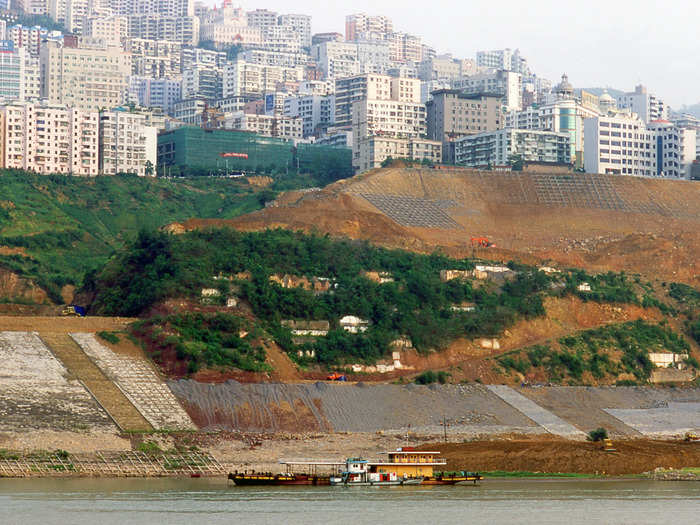
In China, cities are not just defined by physical boundaries, but by jurisdiction. When Chongqing separated from Sichuan, urban and rural areas merged under the same administration, giving rise to what is today known as the megacity of Chongqing.
"I would encourage you to think about Chongqing as a sort of province that's called a city," Jaros said. "In China, there are four so-called 'province-level' cities: Beijing, Shanghai, Tianjin, and Chongqing," he added.
This fact is well illustrated by comparing Chongqing's urban and rural populations. As of 2019, Chongqing had more than 15 million urban residents — a mere fraction of the megacity's total 32 million population.
Chongqing has historically been an industrial city; a photo from 1997 (below) shows densely packed buildings and a bustling port.
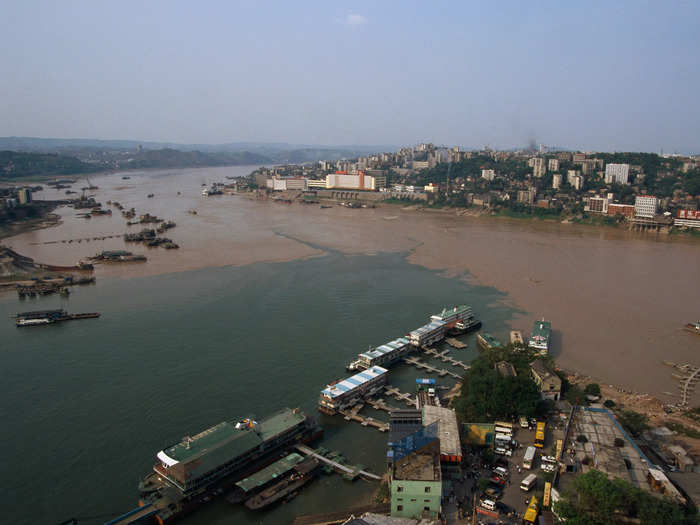
Most of China's major cities — like Beijing, Shanghai, and Guangzhou — are coastal cities in the eastern half of the country, Jaros said.
That's why Chongqing was integral to China's "Open Up the West" campaign, also known as China Western Development, the country's plan to develop its inland cities.
Before China's national-level development of inland cities in the late 1990s, there was "extreme urban poverty" in many parts of Sichuan province, Jaros said.
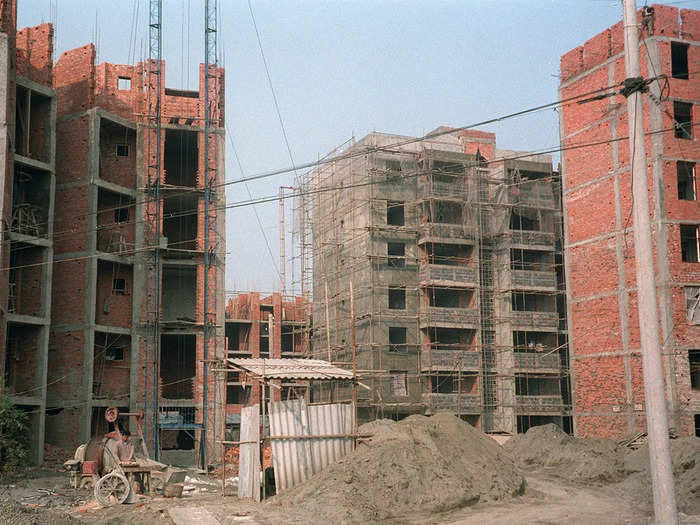
Chongqing went through a difficult economic transition, said Jaros.
"You could say that it was part of China's 'Rust Belt,'" Jaros added. "It's sort of like in the US, we have the Rust Belt of older industrial cities like Detroit and Chicago."
One defining moment in Chongqing's evolution as a city came in 1994, when construction started on the Three Gorges Dam. The dam was completed in 2003.
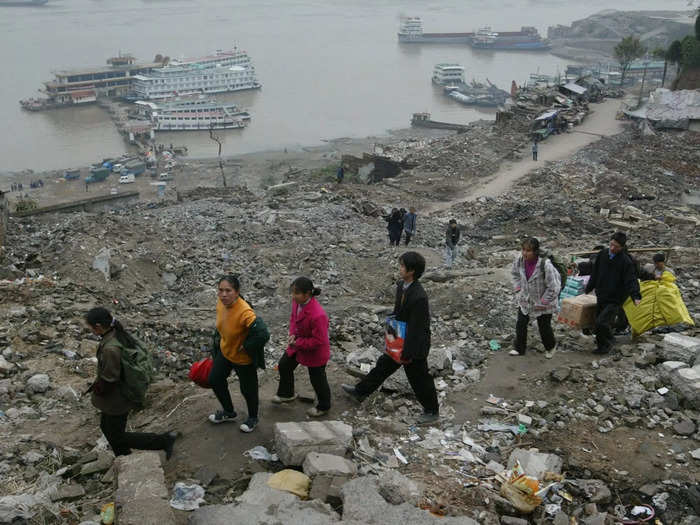
At the time of its construction, the Three Gorges Dam was the world's largest hydro-electric project, according to industry site Water Technology. Upstream of the dam is the Yangtze River, which flows through Chongqing.
Jaros said that it was "easier" to govern and develop Chongqing as a separate entity from Sichuan province because of the construction of the dam.
"By moving a lot of people whose houses and villages would be flooded by the reservoir to one new administrative area, [the administration] could focus on handling those challenges," said Jaros. "That's why Chongqing looks kind of odd on the map," he added, with the city bordering five provinces: Sichuan, Hubei, Shaanxi, Hunan, and Guizhou.
As many as 1.5 million people were displaced, and 115 towns were submerged during the course of building the dam, per Water Technology.
Historically, most people in Chongqing lived in rural areas.
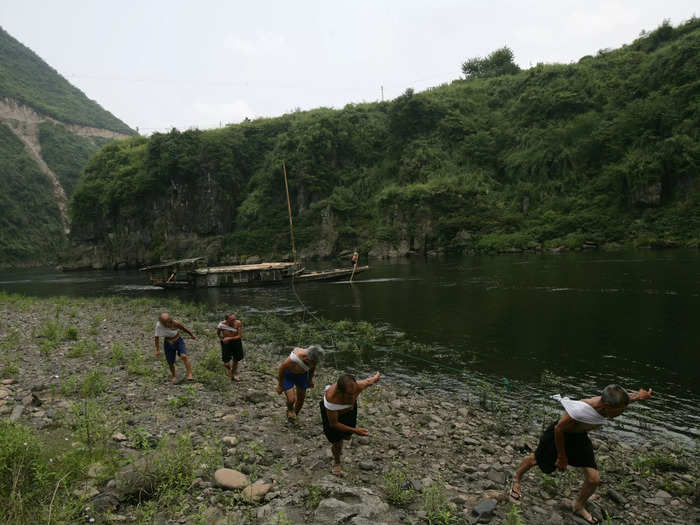
Like the rest of southwestern China, Chongqing's topography is mountainous.
"Most of the area is quite remote and rugged," said Jaros. "So a lot of people did not historically live in cities until urbanization began to move rapidly," he added.
In the mid-2000s, people from the countryside began moving into high-rise apartments in the Chongqing city center, according to a paper by Georgetown University professor Kristen Looney.
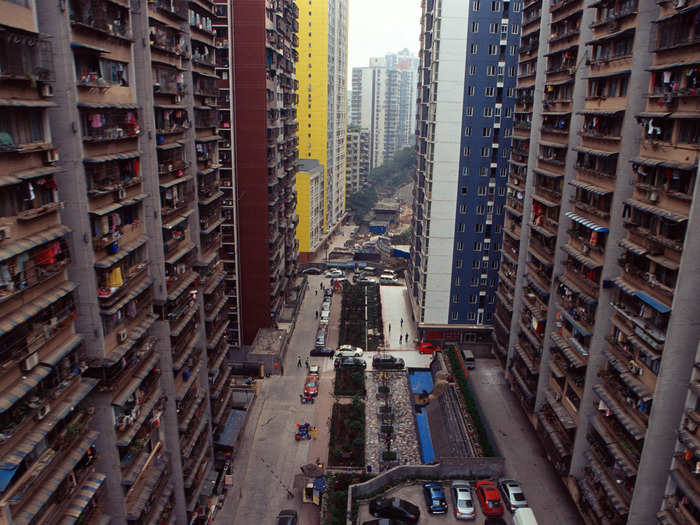
As peasants began to leave their village houses, the municipal administration began constructing homes in urban centers.
The movement from rural to urban areas has had social and economic effects on the city. "Society has become more individualistic, more of a shift to a capitalist economy," said Jaros.
To accommodate the rapidly urbanizing city, Chongqing had to create a vast infrastructure network.
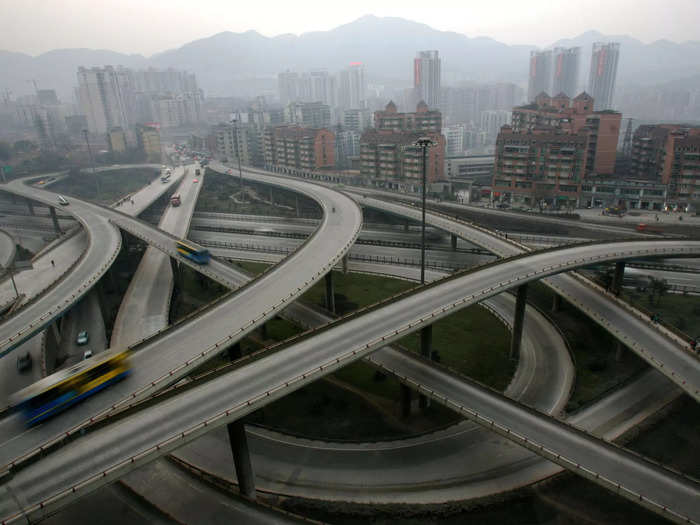
Chongqing's Huangjuewan interchange, which began construction in 2009, is one of the most complex in the region, with five levels and 15 ramps, according to SCMP. Cars drive in eight different directions, according to the newspaper.
Foreign investment helped grow the city's economy in the late 2000s.
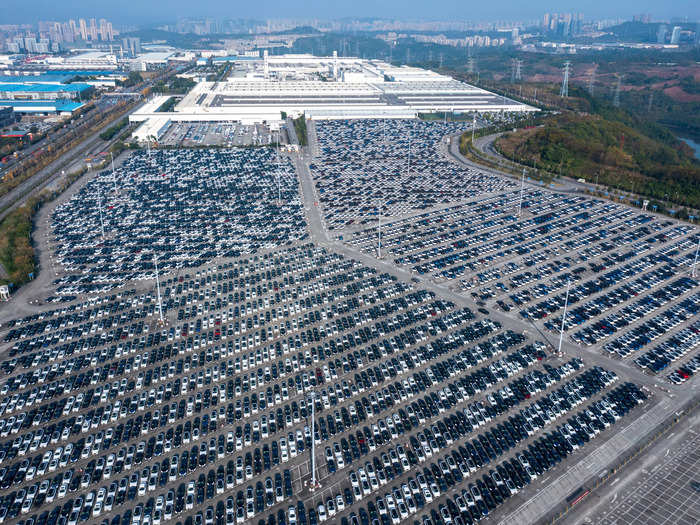
"It was between 2010 and 2020 that was the boom period for Chongqing's development," said Jaros. "There was also a growing amount of foreign investment," he added.
Many multinational corporations, including HP and IBM, have offices in Chongqing. US car manufacturer Ford also has factories (pictured above) in the city. Ford's manufacturing plant in Chongqing is its largest outside of Detroit, according to the company's website.
More than half of the world's top 500 companies conduct operations in the city, per Singapore government microsite Eye on Asia.
Chongqing's total imports and exports topped $83.95 billion in 2019, according to the microsite. The US was its biggest export partner, and accounted for almost 30% of the city's total exports.
Today, Chongqing is a modern city with a sprawling skyline.
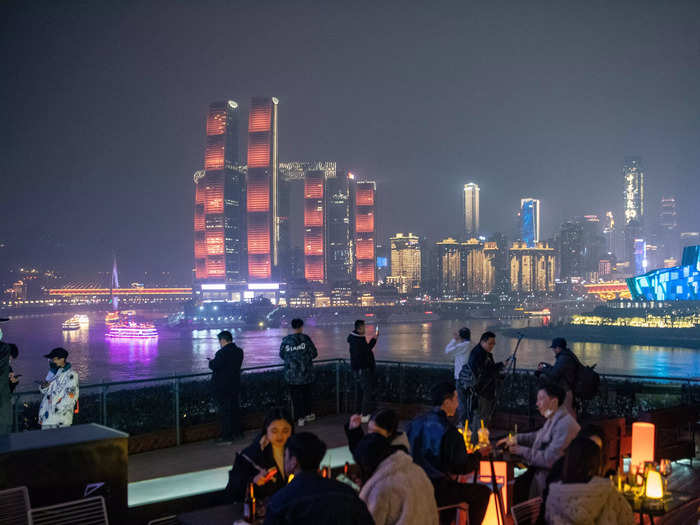
"There has been a huge amount of investment to make the city look modern, impressive, and wealthy," said Jaros.
The city is home to has some of China's most prominent futuristic structures. The Raffles City building (pictured above) is the world's highest skybridge linking the most towers, per The Guardian.
"There are lots of luxury apartments, new development zones, industrial areas, and of course the magnificent skyline of Chongqing," said Jaros.
But Chongqing's ever-expanding housing sprawl is also a cause for concern, Jaros said.

"A lot of cities in China are building these sort of 'mega blocks,'" said Jaros. "From an aerial view, if you're looking at them from far away, they look like cities. But at the ground level they don't really have the benefits of cities," he added, referring to the lack of urban infrastructure like transportation and commercial businesses.
Jaros said the problem with these areas is that they are not "inherently urban or resilient" and do not allow for changing uses.
"If people don't want to live in these places, it's not easy to turn them into an industrial park," said Jaros. "That's what I'm concerned about the expansive, outward growth in the suburbs of Chongqing."
READ MORE ARTICLES ON
Popular Right Now
Popular Keywords
Advertisement